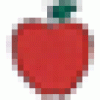Latest Articles
- The arrival of ‘hunt-and-peck’ medicine
I initially had concerns when told that we would be typing all of our visit notes directly into the computer, but I was pleasantly surprised by the benefits of adopting electronic health records.
- Ambulatory blood pressure monitoring: An argument for wider clinical use
Though ambulatory blood pressure monitoring currently has only a limited clinical role, it can be considered in many common situations, such as resistant hypertension, transplantation, pregnancy, chronic kidney disease, and dialysis.
- What is adequate hypertension control? Having your dinner and dessert too
Controlling the blood pressure per se should be our primary concern (“dinner”), while choosing agents that may have added benefit in specific situations is secondary (“dessert”).
- Exposing the complexity of HDL
HDL is a heterogeneous population of particles, and we should not be surprised if these particles differ in their effect on the arterial wall.
- The Women’s Health Initiative and hormone therapy, 5 years later
“Although I knew then that we were in for a big change, I did not anticipate the total impact.”
- Update on adolescent immunization: Pertussis, meningococcus, HPV, and the future
Preteens and teenagers will be getting more shots. The extra visits will give us another opportunity to talk to these young people about high-risk behavior.
- Short-term prognosis after a TIA: A simple score predicts risk
This article discusses the defining features of transient ischemic attacks (TIAs), and their immediate evaluation and management.
- Diagnostic strategies for suspected pulmonary arterial hypertension: A primer for the internist
If not recognized early, pulmonary arterial hypertension can have devastating consequences. Recent advances have led to improved diagnostic strategies.
- Vulnerable patients are between a ‘ROC and a hard place’: Yes, it’s time to screen for coronary artery disease
In the September 2007 issue, Dr. Michael Lauer rejected the recently proposed Screening for Heart Attack prevention and Education (SHAPE) guidelines. The authors of the SHAPE guidelines would like to address his arguments.



